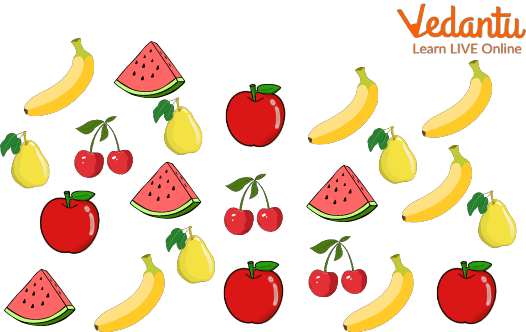




Data Collection for Grade 1
Suppose you are on an aquarium visit, the class saw 10 dolphins, 5 seals, 12 crabs, 15 sharks, and 8 turtles. And according to the data collected from the reviews, sharks are seen the most, and seals are seen the least. But how do you find that out? Data is a collective term for information gathered through observations, measurements, research, or analysis. They could include names, dates, figures, facts, or even descriptions of objects. Data is presented in graphs, charts, or tables. Data scientists are people who collect data and analyze it to understand our world better.
Data is classified into qualitative and quantitative. In other words, displaying and interpreting data is known as data collection.
Types of Data Collection
We represent and interpret data in two forms:
Qualitative Data
Quantitative Data
Quantitative Data
The term 'Quantity' refers to a certain number. Quantitative data collection methods express the data in figures or numbers using traditional or online methods. Once these data are collected, statistical methods and mathematical tools can arrive at the results. Some of the quantitative data collection methods include probability sampling, surveys, and conducting interviews.

Quantitative Data
Qualitative Data
Qualitative data collection methods do not include any mathematical calculations to collect data. It is mainly used for analyzing the quality or understanding the reason behind something. Some of the common methods used for qualitative data collection are discussed below.
Interview Method: As the name suggests, the verbal conversation makes data collection by interviewing people in person or in the telephone or using any computer-aided model.
Questionnaire Method of Collecting Data: The questionnaire method involves surveys with questions targeting quantitative research. These survey questions are easily made using online survey question creation software.
Observation Method: As the word 'observation' suggests, in this method, data is collected directly by observing. This can be achieved by counting the number of people or events that occur in a particular time frame.
The main skill needed here is observing and correctly arriving at the numbers.
Document Review Method: The document review method is a data collection method that is used to collect data from existing documents that have data about the past.

Qualitative Data
Data Collection and Representation in Tables
Let's learn more about data collection and representation in tables:
You must have viewed news channel reports on weather forecasts. They provide measurements, rainfall forecasts, minimum and maximum temperatures, and more. Data collection and representation in tables shown below:
Consider that you are asked to create a table that lists the weight and height of each student in your class. It would look something like this:
The Difference Between Quantitative and Qualitative data
The primary distinctions between quantitative and qualitative data are in what they reveal, how they are obtained, and how they are examined.
Following are the difference:
Solved Examples
Q 1. Which data collection method would you use for the following scenario?
(a) To know the preferred brand of clothing of a certain age group.
Ans: To know the preferred brand of clothing of a certain age group, a primary data collection method, such as a questionnaire survey can be used since we need to know the preference of every individual member of the group.
(b) To know the average rainfall recorded in a year.
Ans: To know the average rainfall recorded in a year, we use the secondary data collection method by looking through the reports that show the statistics of rainfall recorded in previous years.
Q 2. Find the type of data collection method (Qualitative or Quantitative) that could be used for the following.
(i) How well do you recommend an institute to another person to take up a course?
Ans: The first part of the question uses the qualitative data collection method since we will have to analyze the institute's reach, the amount of fee to be paid, and the quality of education received. These factors can only be determined by any of the survey methods.
(ii) To know how many people have attended a training course.
Ans: The second part of the question uses a quantitative data collection method since we will have to get the count by any personal contact method to actually know how many people have attended the training course.
Practice Questions
Q1. Choose the way to represent, and interpret data grade 1 worksheets.
(i) Choose the number of fruit which is most in number

Practice Question
Ans: Banana
(ii) Name the fruit which is the least in number.
Ans. Cherries
Summary
Data represents information collected in the form of numbers and text. Data collection is done after an experiment or an observation. Data collection is useful in planning and estimation, and it also saves a lot of time and resources. Data collection is either qualitative or quantitative. Data collection methods are used in businesses and sales organizations to analyze the outcome of a problem, arrive at a solution, draw conclusions about the performance of a business, and so on. In this article, we have added some solved example which is statement based, this will give more clarity on the topic.
FAQs on Displaying and Interpreting Data for Grade 1
1. Give some examples of qualitative data.
Some examples of qualitative data are Height in feet, age in years, and weight in pounds.
2. Give some examples of quantitative data.
Some examples of quantitative data are Documents, Case Studies, Photographs, Audio recordings, and Video recordings.
3. What are the types of qualitative data?
There are two types of qualitative data: Nominal data and ordinal data.











